Japan has a tradition of ghost stories dating from the Edo period and if you’ve been there before you may have heard some of them. “Yotsuya Kaidan” or the Yotsuya ghost story, a story of murder and revenge, is probably the most famous one. It has inspired numerous horror movies and nearly all Japanese are familiar with it in one form or another. It has its origin in the Oiwa Inari Tamiya Shrine in the Yotsuya neighborhood of Shinjuku city.
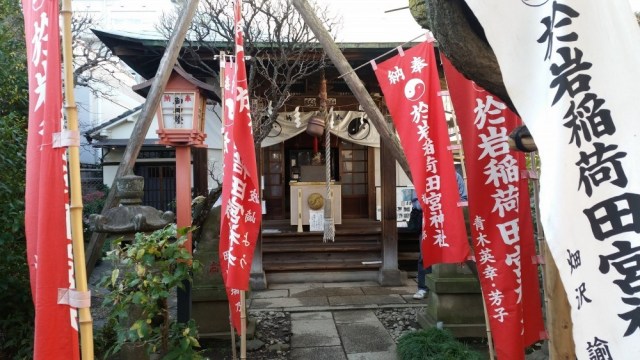
The Yotsuya Kaidan Ghost Story
The story was originally written in 1727 and was later adapted for Kabuki, a kind of traditional Japanese theatre, in 1825.
In the play, Yotsuya Oiwa is an ordinary Japanese woman married to a ronin or masterless samurai called Tamiya Iemon. One day she receives a poisoned facial cream from Oume, a rival for Iemon’s love. Her plan is that the cream would disfigure Oiwa and cause Iemon to divorce her. However, her plan works too well. Oiwa turns hysterical after seeing her disfigured face in the mirror and accidentally kills herself while running with a sword. She returns as an onryo, a revengeful ghost. By the end of the play most of the characters have died from various accidents. Oiwa thus got her revenge.
The details of the story such as the manner of Oiwa’s poisoning and death have changed over time but the basic outline has remained the same – the story of a ghost seeking revenge. Scenes of Oiwa’s hair falling out after being poisoned and her disfigured face are extremely famous and have been represented many times since the play’s debut.
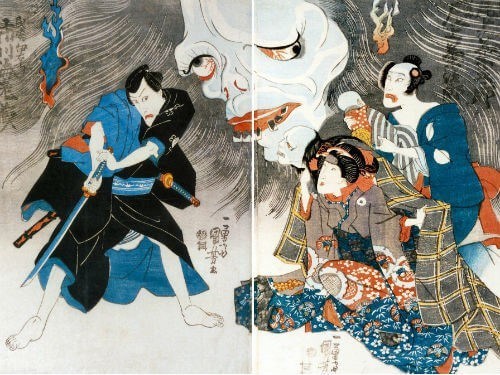
The Shrine Oiwa Inari Tamiya Jinja
I decided to pay a visit. The shrine is easy to find thanks to a couple of red banners visible from the street and bearing the place’s name.
A shiny golden plaque explains in Japanese and English that there was a real-life Oiwa who lived two hundred years before the Kabuki play was first performed. However, she was happily married to her husband and none of the events described above ever happened. It is possible that her name was used in the original story out of jealousy of her success. The shrine was named after her since she used to pray there and is on land owned by the Tamiyas, her husband’s family.
The shrine is dedicated to Inari, the God of prosperity and success in the Shinto religion. Inside, you can see small white fox statues, the fox being Inari’s messengers.
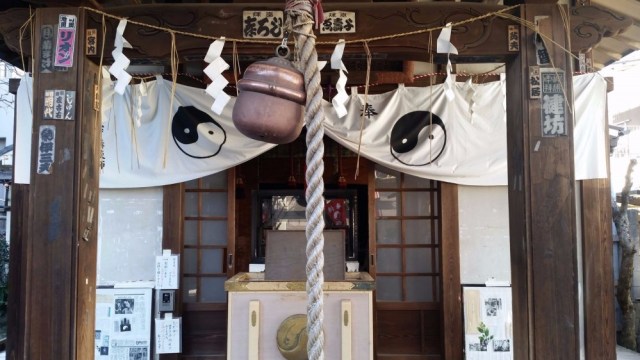
I ducked under the stone torii, a kind of Japanese archway marking the entrance to a shrine, and followed the short path to a small wooden building with a large hanging bell and a wooden offering box. The proper way to pray at a Shinto shrine is to first ring the bell by giving the attached thick cord a good shake, then bow twice, clap twice and then finally bow one more time. It is also customary to throw a 5 yen coin in the offering box although here it seems here people put in a wish written on a piece of paper instead. Small strips of paper and pencils are placed on the left for this purpose. The small buzzer behind is for people wanting to buy a omamori, a protective charm. On the right are pieces of paper with monthly sayings which you can take away.
A word of caution: nearly opposite on the left is a temple that claims to have a connection to the Oiwa legend. However, it was built after Oiwa’s time so be careful not to mistake it for the shrine.
Is the Shrine Really haunted?
According to some people, the shrine is considered one of the most haunted places in Tokyo and is even part of ghost walking tours. On my visit I thought it looked quite ordinary but also a bit old and worn-down. I guess that it could send a slight shiver down your spine especially if you know the associated ghost story. However most Japanese don’t consider it haunted and it was surprisingly busy even on a weekday. Each time one person left another person arrived to pray to Inari, mainly for the same happiness and success that Oiwa enjoyed in her life.
So where does its reputation come from? Apparently strange accidents have occurred when filming remakes of the Yotsuya Kaidan Ghost story. However, Oiwa-san isn’t buried at the shrine but at Myougoji temple in Sugamo. So there is a custom for the director and main actors to pay a visit to her gravesite and ask for her blessing before shooting. In the end, you’ll have to visit the Oiwa Inari Tamiya Shrine yourself in order to decide whether or not it is haunted but if you are superstitious and believe in ghosts, you should avoid going there at night!
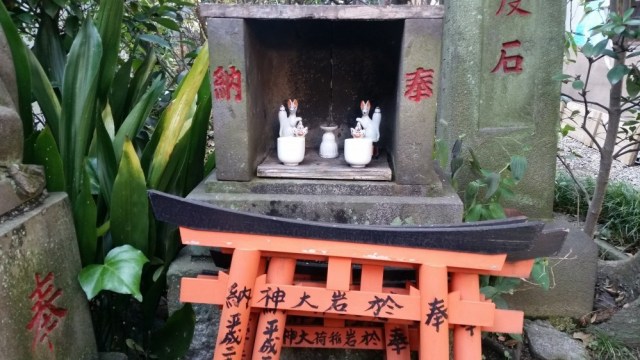

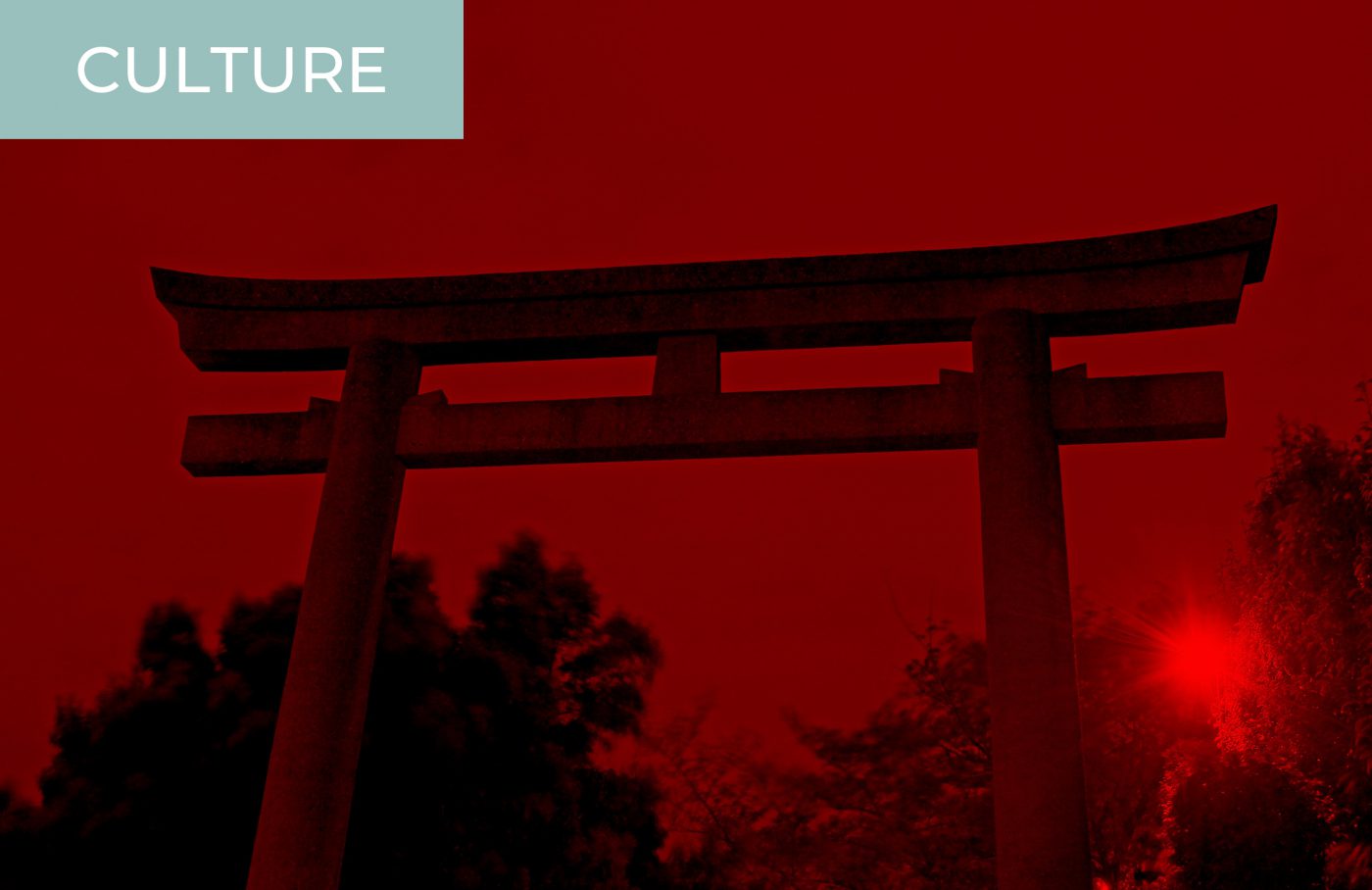

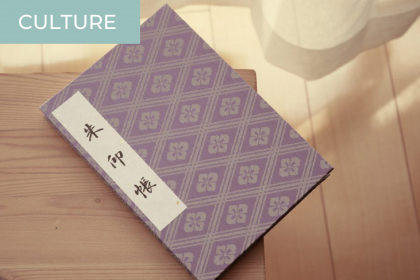
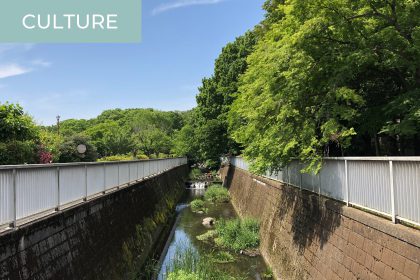
2 Comments
Cienna Ryland
June 10, 2021 at 2:16 AMthis is very interesting! I was doing some research for a story I’m writing! 🙂 I really love Japan and I love the Japanese language. It’s such a beautiful culture.
Amélie Geeraert
June 10, 2021 at 9:43 AMDear Cienna, thank you for your comment! I’m glad you enjoyed the article. Do not hesitate to explore the rest of our website for more inspiration for your story!